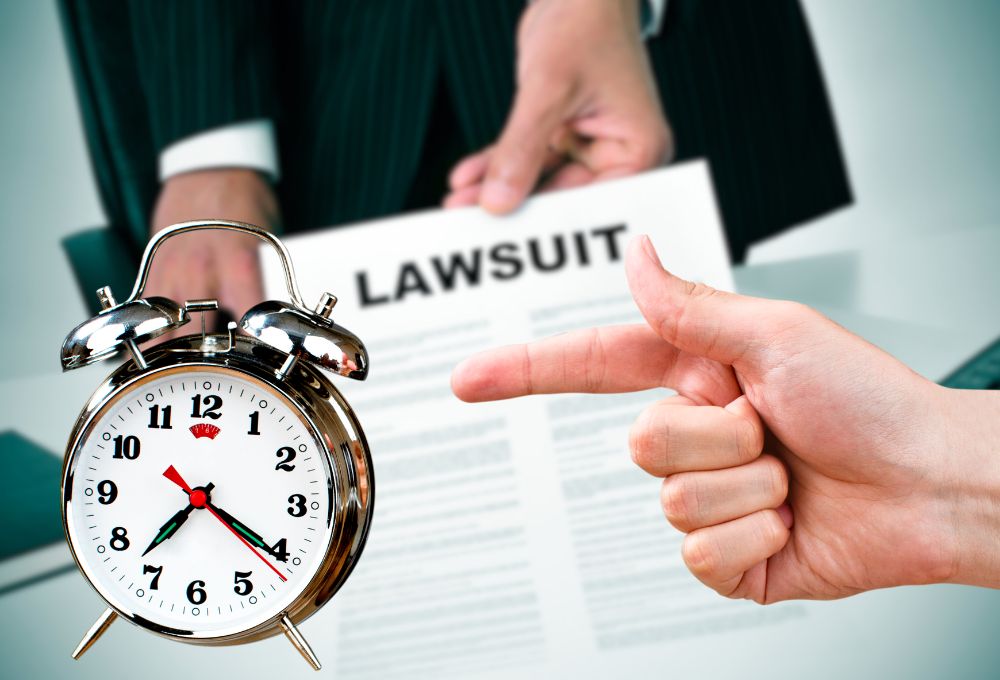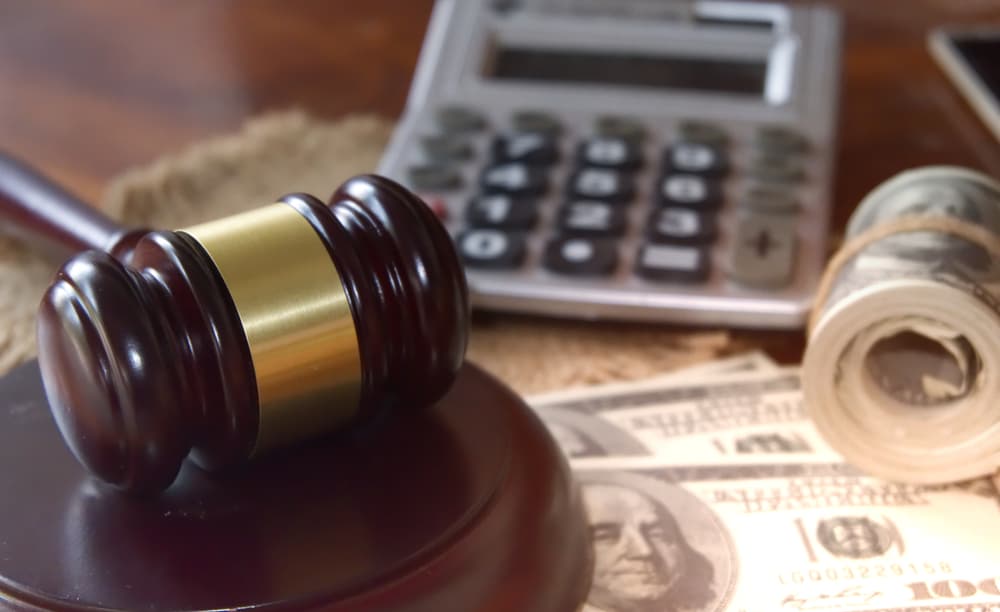When individuals or companies behave negligently, serious accidents and injuries may result. In these situations, an injured accident victim may file a personal injury claim with the responsible party's insurance company. However, the accident victim may sometimes need to escalate their case to litigation by filing a lawsuit in the court system.
The time it takes to resolve a personal injury lawsuit depends on numerous factors, including the extent of the accident victim's injuries, medical treatment, and the circumstances surrounding the accident. A skilled personal injury attorney can expedite the process by efficiently filing a claim or lawsuit on your behalf and gathering the documentation necessary to prove your case.
Types of Negligence by Others

Negligence is a legal concept that forms the basis for many personal injury claims and lawsuits. It refers to an individual or entity’s failure to exercise reasonable care, resulting in harm or injury to another person.
Duty of care implies that the at-fault party (defendant) was legally obligated to act with reasonable care towards the victim (plaintiff). The relationship between the parties or the circumstances surrounding the situation is the basis for this duty. For instance, drivers have a duty to drive safely, and property owners have a duty to maintain a safe environment for visitors.
Breach of duty occurs when the defendant fails to meet the standard of reasonable care expected in a given situation. This breach can happen in various ways, leading to different types of negligence.
- One common type is negligent actions, where an individual fails to take necessary precautions, leading to injury. This can include reckless driving, failing to maintain property, or inadequate supervision of activities.
- Another type is negligent supervision or hiring, often relevant in the context of employers. If an employer hires an individual without conducting proper background checks or fails to provide adequate training, they may be liable for any harm their employee's actions caused.
- Negligent maintenance pertains to the failure to keep property, equipment, or facilities in a safe condition. For example, if a property owner neglects to repair a broken railing, leading to a fall and injury, they may be negligent.
- Negligent infliction of emotional distress occurs when an individual's negligent actions cause severe emotional distress to another person. This may involve situations where someone witnesses a traumatic event due to another's negligence.
- Premises liability involves negligence on the part of property owners. Slip and fall accidents, inadequate security measures, or failure to warn of known hazards fall under this category.
Negligence is a foundation personal injury law, encompassing various types of breaches of duty that can lead to harm or injury. Recognizing these common types of negligence is essential for individuals seeking recourse through a personal injury claim or lawsuit.
Extent of an Accident Victim's Injuries
Injuries resulting from someone else's negligence can vary widely, affecting different parts of the body and leading to diverse consequences for the victim. One common type of injury is traumatic brain injury (TBI), often resulting from falls, vehicle accidents, or other incidents where the head sustains significant impact. TBIs can range from concussions to severe, long-term brain damage, affecting cognitive function, memory, and overall quality of life.
Spinal cord injuries are another severe consequence of negligence, often occurring in accidents involving significant force or trauma. These injuries can lead to paralysis, affecting motor function and sensory abilities. The extent of disability depends on the location and severity of the spinal cord damage.
Broken bones or fractures are frequent outcomes of accidents caused by negligence. These injuries can occur in various body parts, including the arms, legs, ribs, and pelvis. The severity of fractures varies, from simple breaks to more complex, multiple fractures that may require surgical intervention.
Soft tissue injuries, such as sprains, strains, and contusions, are common in negligence-related accidents. These injuries can result from falls, collisions, or sudden impacts, damaging muscles, ligaments, or tendons. While often less severe than fractures or TBIs, soft tissue injuries can still cause significant pain and impairment.
Burn injuries may occur due to negligence, particularly in situations involving fires, chemical exposure, or defective products. Burns vary in severity, from first-degree burns causing superficial damage to fourth-degree burns penetrating deep into tissues, requiring extensive medical intervention.
Whiplash is a common injury in motor vehicle accidents, especially rear-end collisions. This neck injury results from the rapid back-and-forth motion of the head, causing strain on the neck muscles and ligaments. Whiplash can lead to pain, stiffness, and long-term discomfort.
Internal injuries, such as organ damage or internal bleeding, may also occur in accidents involving significant force. These injuries are not always immediately apparent and may require a thorough medical evaluation to diagnose and treat effectively.
Psychological injuries, including post-traumatic stress disorder (PTSD), anxiety, or depression, can result from traumatic incidents caused by negligence. Witnessing or experiencing a severe accident can have lasting effects on an individual's mental well-being.
Injuries resulting from someone else's negligence encompass a broad spectrum, ranging from physical trauma like TBIs, spinal cord injuries, fractures, and burns to softer tissue injuries, whiplash, internal injuries, and psychological trauma. Understanding the diversity of these injuries is crucial for individuals seeking compensation for the harm they’ve suffered due to others’ negligent actions.
Factors That May Affect the Length of a Personal Injury Lawsuit
Several factors influence the duration of resolving a personal injury lawsuit arising from someone else's negligence. These factors include the following:
- First, the complexity of the case plays a pivotal role. Cases involving intricate legal issues, multiple parties, or extensive damages may take longer to navigate the legal process. The more complex the case, the more time it may require for thorough investigation, discovery, and legal arguments.
- The severity of the injuries sustained is another crucial factor. Cases involving severe injuries or long-term consequences often require extensive medical assessments, expert opinions, and careful consideration of the long-term repercussions on the victim's life. Compiling and presenting this information comprehensively may contribute to a more prolonged legal process.
- The willingness of the parties to negotiate and reach a settlement also affects the timeline. If both parties are open to negotiation and can agree on a fair resolution, the case may be resolved more quickly through settlement discussions rather than a protracted trial. However, when parties are unwilling to compromise, or there are disputes over liability and damages, the legal process tends to be more time-consuming.
- Court congestion and the overall caseload in the jurisdiction where an attorney files the lawsuit can significantly affect the timeline. Some jurisdictions experience a backlog of cases, leading to delays in scheduling court dates and proceedings. The availability of court resources and the efficiency of the legal system in handling cases contribute to the overall timeline of the lawsuit.
- The effectiveness of legal representation is another key factor. Competent and efficient attorneys can streamline the legal process, navigate complexities, and negotiate effectively, potentially expediting the case's resolution. Conversely, inadequate legal representation may lead to unnecessary delays and complications.
- The nature of the available evidence also influences the timeframe. Cases with clear and compelling evidence may progress more swiftly, while those relying on extensive discovery or dealing with disputed facts may experience delays in reaching a resolution.
- Finally, the defendant's insurance company and their approach to the case affect the timeline. If the insurer is cooperative and willing to settle promptly, this can expedite the resolution. However, the legal process may be prolonged if the insurance company adopts a contentious stance or employs delaying tactics.
Various factors, including case complexity, severity of injuries, willingness to negotiate, court congestion, legal representation, nature of evidence, and the insurance company's approach, collectively determine the time to resolve a personal injury lawsuit stemming from another person’s negligence.
What Happens During Personal Injury Litigation?
Personal injury litigation involves several key stages, beginning when the plaintiff files a complaint. After the defendant responds, the discovery phase begins, when both parties exchange information, documents, and evidence relevant to the case. Depositions, where witnesses provide sworn testimony outside of court, play a significant role in this phase, helping to shape the arguments for trial.
During the pre-trial phase, parties may pursue mediation or arbitration — alternative dispute resolution (ADR) mechanisms. Mediation involves a neutral third party facilitating negotiations between the parties to reach a settlement, while arbitration entails presenting the case to a neutral arbitrator who makes a binding decision. These ADR methods aim to resolve the dispute without a trial, potentially speeding up the process and reducing litigation costs.
If the parties do not pursue ADR – or it fails – the case proceeds to trial. Jury selection is a crucial step in a jury trial, where both parties and the judge participate in choosing jurors who will hear the case. Each side presents its opening statements, outlining its position and the evidence they will present.
The presentation of evidence follows, encompassing witness testimonies, documents, and any other relevant materials. As the party bringing the lawsuit, the plaintiff bears the burden of proving the defendant's negligence and the resulting damages. The defendant, in turn, presents its defense, challenging the plaintiff's claims and offering evidence to counter them.
Cross-examining witnesses is an important aspect of the trial, where attorneys scrutinize the credibility and reliability of the opposing party's evidence. Lawyers may call on expert witnesses to provide specialized insights, aiding the jury in understanding complex parts of the case, such as medical or technical issues.
Closing arguments offer each side a final opportunity to persuade the jury of its position. The judge then provides instructions to the jury regarding the applicable law and the standards they should use to reach a verdict.
The jury deliberates, weighing the evidence and arguments presented. Once the jury reaches a verdict, the court reconvenes, and the jury announces its decision. If the verdict is in favor of the plaintiff, the court determines the amount of damages to award the victim. The defendant, however, may have the option to appeal the decision, leading to further legal proceedings.
Personal injury litigation involves various stages, from the initial filing of the complaint to discovery, potential ADR methods, and, if necessary, a jury trial. Each phase contributes to the overall process of seeking justice and compensation for the injured party.
What Types of Damages Can I Recover in a Personal Injury Case?

An accident victim pursuing a personal injury claim or lawsuit may be eligible for various types of monetary damages, reflecting the diverse effects of the incident on their life.
- Compensation for loss of earnings is a basic component, encompassing the income the victim has lost due to the accident, including wages, salary, and other forms of compensation. Likewise, loss of earning capacity acknowledges the potential long-term effects on the victim's ability to earn income. This type of compensation considers factors such as the individual's skills, education, and career prospects, evaluating the long-term effects on their earning potential.
- Mental distress arising from the emotional toll of the accident can lead to compensation. This includes anxiety, depression, or post-traumatic stress disorder (PTSD). Documenting psychiatric evaluations, counseling records, and testimonies from mental health professionals aids in establishing the extent of mental distress suffered.
- Past and future medical expenses are also recoverable, covering the costs of medical treatments, surgeries, medications, and any ongoing healthcare needs. Comprehensive documentation, including medical bills, records, and expert opinions, supports a claim for these damages.
- Loss of use of a body part recognizes the effects on daily life resulting from the inability to use a specific body part due to the accident. Medical records, expert opinions, and testimonies play a crucial role in establishing the limitations the accident victim experiences.
- Embarrassment and humiliation damages may be available, acknowledging the emotional distress from the accident. Evidence supporting this claim includes personal testimony from the accident victim, documentation of instances causing embarrassment, and the resulting emotional toll.
- Permanent disfigurement compensation addresses the enduring physical changes resulting from the victim’s injuries. Photographs, medical records, and expert opinions contribute to demonstrating the lasting effects on the victim's appearance.
- Inconvenience damages compensate for the disruptions to the victim's daily life and routines that the accident causes.
Thorough documentation, expert opinions, and clear evidence of the diverse consequences of an accident all contribute to building a compelling case for fair and just compensation.
Contact a Personal Injury Lawyer Today
If you sustained injuries in an occurrence that a negligent individual or entity caused, you should speak with a personal injury attorney as quickly as possible. Otherwise, you may severely jeopardize your right to file a claim or lawsuit and recover compensation.
A skilled personal injury attorney can start working on your case immediately to pursue the financial recovery you deserve. Specifically, your lawyer can investigate the occurrence circumstances, file a claim on your behalf, or litigate your case to a resolution in the state court system.



